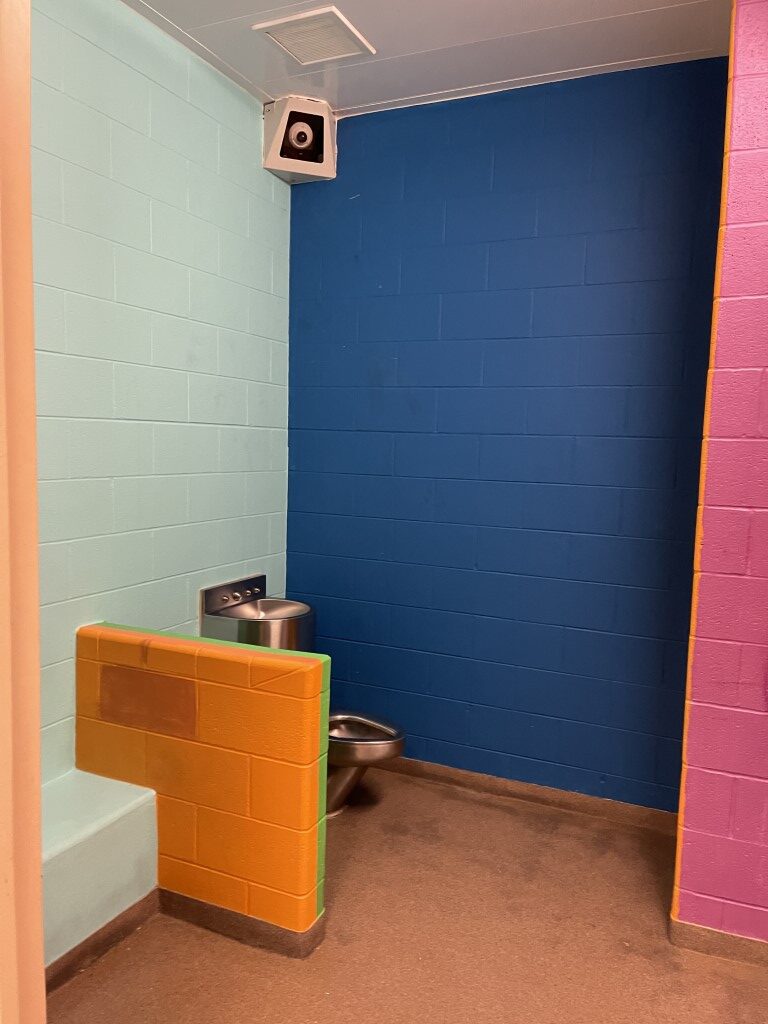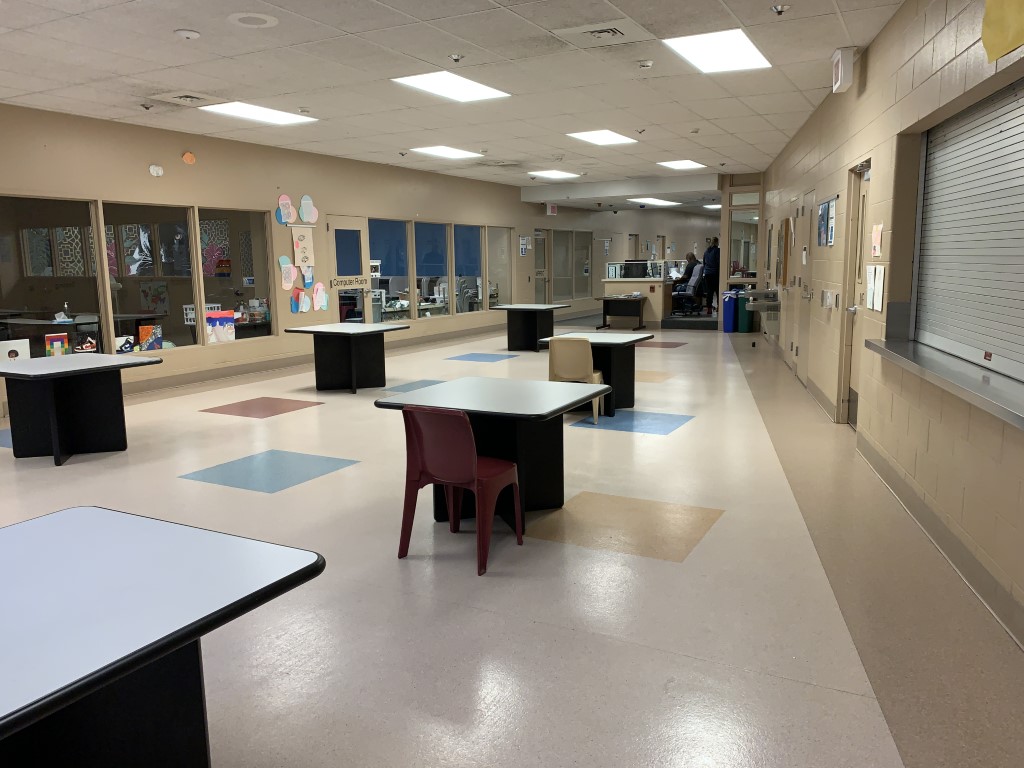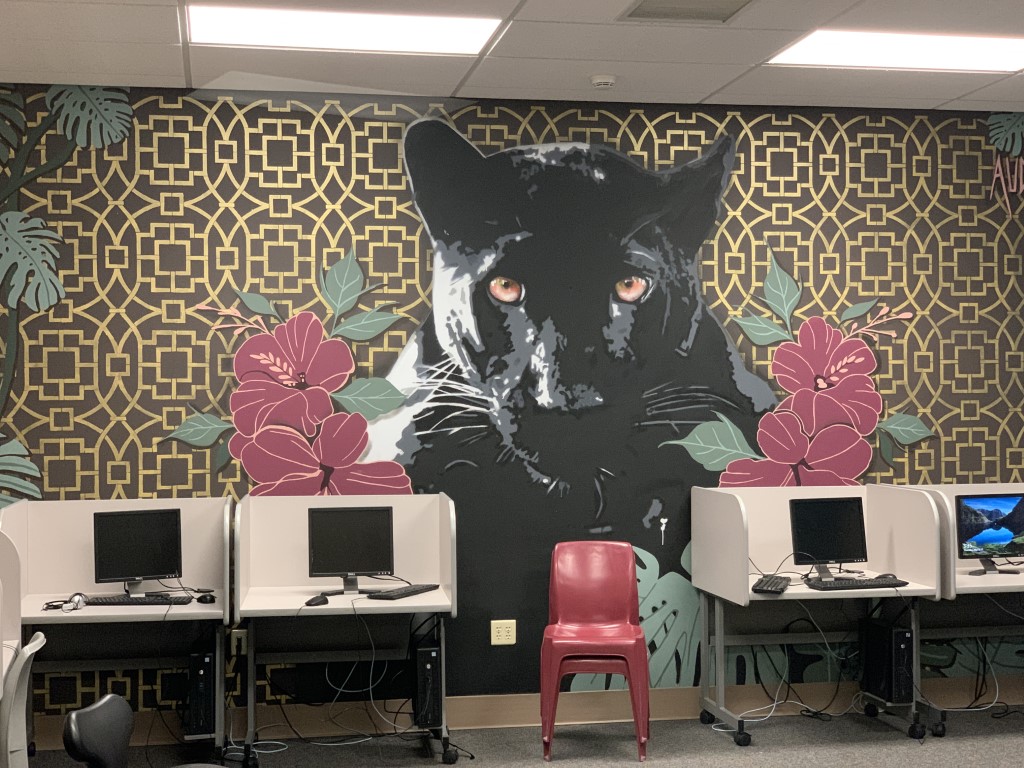Have you ever wondered what happens after a juvenile is arrested in Dane County? Some community members recently took a tour of the Juvenile Reception Center, led by Juvenile Court Administrator John Bauman, and they got to see first-hand where juveniles spend their time after an arrest.
Law enforcement officers have full discretion at the time of apprehension of a juvenile and the Juvenile Court system does not intervene. For example, after a battery or some other offense, a police officer could decide to release the minor to a parent. If they decide they can’t release the youth, for whatever reason, they are brought to the Juvenile Reception Center (JRC).
The JRC and Juvenile Detention is an independent, 28,000 square-foot, 30-bed facility, housed within the City County Building downtown, and funded mostly by the Dane County tax levy. A renovation in August of 2007 added more program space and trauma-enforced design (no sharp corners, etc.). The JRC provides intake services for kids 10-16 years old who are referred by law enforcement on state charges.

At intake, each juvenile is searched and waits in one of two holding cells. The JRC then makes a decision regarding temporary physical custody for the minor while court is pending. Calls are made to parents to find out how the child has been doing, interviews conducted with the kids and other collaterals (social workers, etc.), and their court history is checked. The JRC could choose to place the minor under Non-Secure Custody (NSC) and release to parents, a shelter, a group home (although there are no group homes in Madison), a foster home, a relative’s home, etc. or to keep the minor under Secure Custody in Detention.
A Physical Custody Hearing must be held by the Court within 24 hours if custody is taken, unless it is a weekend. At the hearing, a Commissioner will decide whether to release from custody, continue with custody at Detention, or place under Non-Secure Custody and what the conditions and orders will be (ankle monitor, no contact orders, etc.). Each juvenile is assigned a social worker from Human Services for assessment and case management from the time of intake until court supervision is over. A typical court order and supervision lasts for one year. Social Workers currently have caseloads of 16-20 kids.

If custody isn’t taken initially by JRC or law enforcement arrests and releases the youth, a Human Services Social Worker has 40 days to gather information and make a recommendation to the DA’s office on whether it should be a formal case, deferred prosecution case or counsel and release. The DA’s office has 20 days to respond before the next hearing. The DA can agree or disagree with the recommendation.
The most common charges against juveniles referred to JRC are disorderly conduct and battery, although auto theft (or Operating a Motor Vehicle Without Owner’s Consent) is currently popular.
In 2020, the number of arrests, detentions, court cases and hearings all dropped significantly, likely because parents were home more and better able to supervise. But as of March 1, 2022, 29 juveniles are under a correctional order, the highest number in many years. Seven of the 29 are in secure custody at Lincoln Hills/Copper Lake, which costs about $400,000 per child per year. That and the JRC are the only secure options for Dane County youth.
This large group of kids has been bubbling through the system and many are now approaching 17 and headed to the adult criminal justice system and real jail for their offenses. Thrill seeking has led to worse problems and bigger consequences.
When asked what is the one thing you most want, the overwhelming majority of those in Detention say they want adults in their lives. There are 12 detention facilities in the state of Wisconsin, and ours is arguably the best. It does not exist to teach a lesson, or to be a punishment. “We literally have a captive audience,” Juvenile Court Administrator John Bauman said. “We’re not a treatment program– we’re short term. There are a lot of groups who want to come in and work with the kids. Kids always leave with a higher baseline in many parts of their lives,” he said, after experiencing adult attention, good nutrition, medical care, learning groups, and physical exercise.

Bauman, who has been working with kids for 37 years, has seen this too many times. “By the time they get here (to the JRC), they’re already experiencing struggles at home, school, in the community,…” The vast majority of repeat offenders have major trauma. Many had experiences in the Children in Need of Protection or Services (CHIPS) program. Many have experienced neglect and/or abuse and have grown up in a tough situation.
The JRC provides kids with structure and routine. They get up at 7:30am to eat and clean up before having quiet time for reading and school, followed by a lunch break and more school. About 3:30 in the afternoon, kids have recreation time in the gym or rec room to watch TV, play cards or games, and possibly have visitation, with or without contact, depending on their conditions. After dinner, there is a staff-led group and staggered bedtimes/quiet hours. Kids stay in a single, locked (from the outside) room with a bed, toilet and sink. Every 25 minutes throughout the night, staff look through a panel that opens in the door to make sure each child is breathing and all right.

Cell phones are not allowed. Showers are one at a time and the showers are locked from the outside.
On Fridays, members of the Madison Police Department’s Gang and Neighborhood Crime Abatement Team (GNCAT) spend time building relationships with the kids and work at increasing trust and partnership.
As the tour participants left, there was a stark reminder that these kids are in a secure, locked facility, as one locking door needs to close before the next one opens.
What can be done to help these kids before it’s too late? Stay tuned for Part 2 to learn about the support juveniles receive at the JRC and what is being done to try to break the cycle for these kids before they enter the world of the adult corrections system.
